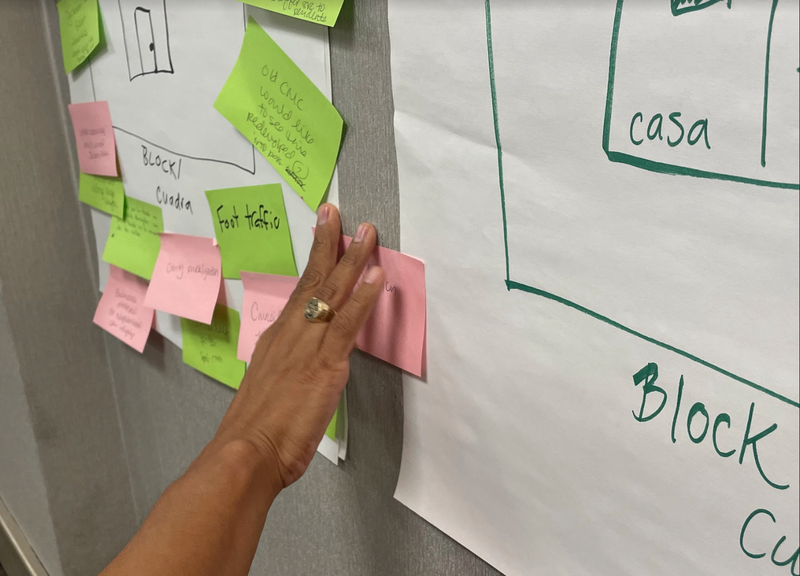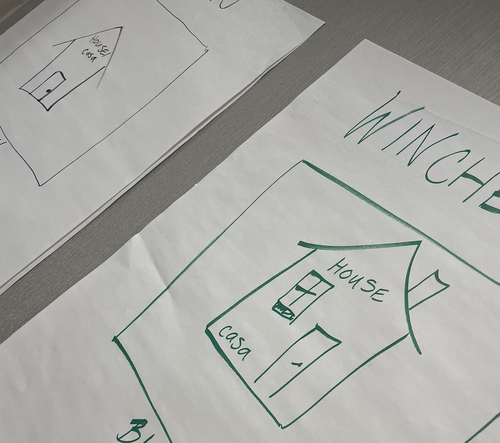Community Priorities for Public Policy
Residents discuss programs that could help them stay in Fresno’s Jackson and Winchell neighborhoods
Blog Post

Molly Martin
Sept. 30, 2022
Deep social, economic, and racial inequities affect the way people engage with and experience their communities. Over time, systemic disinvestment in Fresno’s Jackson and Winchell neighborhoods has created an environment in which community leaders often fill gaps with mutual aid networks, entrepreneurship, food giveaways, and volunteer clean up crews. It is all too common that low-income communities and communities of color must subsidize their neighborhoods while making the case for equitable and sustainable resourcing. We hope that the stories and priorities elevated through this process will showcase the inherent value and vitality of the people and places within Southeast Fresno.
On September 19, 2022, New America CA (“NA CA”) hosted a two and a half hour conversation to discuss what policies, programs, and events help the residents of Jackson and Winchell stay in their neighborhood. Nine residents and one policy leader attended, along with three members of the NA CA research team and an interpreter for Spanish and English translation.
In the opening activity, participants reacted to “Hope Narratives,” a list of aspirations and values elevated during earlier conversations with Jackson and Winchell residents. Reading each of the five statements related to thriving and healthy residents aloud, the attendees shared how they felt about each statement, and how much more investment and development into the community was needed to achieve these goals. While many of the residents saw strengths in their neighborhood (a kid-centered mindset, for example), they noted a lack of resources for physical and mental health, as well as too few, or low awareness of, resources to help residents access or navigate public benefits. These challenges coupled with the need for more affordable housing and an appetite for help with home maintenance, were all factors that could compromise residents' ability to remain and thrive in the community.

Residents emphasized the lack of public policy support and programs that would allow the community members to repair old homes, maintain good health, and fully enjoy their neighborhood. They then shared their top priority solutions for developing a neighborhood where people feel safe and secure, highlighting issues they felt were most critical for policymakers to address:
Programs to help pay for and enable home purchase, repair, including educational resources, tools and materials.
Specific tactics included:
- A program to help low-income families repaint their homes and fix fences, allowing some residents to help maintain their homes
- Programs focused on repairing existing assets, like community maintenance funds (even funded by crowd-sourcing), sliding scale loans to help pay for maintenance, or tool lending-libraries
- Programs that are available to renters as well as homeowners
- Broader financial support and home financing for renters
- Affordable short-term housing and general economic support for people without homes, promoting well-being for all, protecting property values, and ensuring that residents feel safe
Inclusive and affordable mental health support for people in the neighborhood.
Even as residents shared other priority needs (e.g. the need for public, clean, and green spaces like parks) when voting on priority issues they felt that mental health clinics and programs were among the biggest needs for the neighborhood. Residents agreed that mental health support should be affordable, located nearby, and inclusive regardless of citizenship or housing status.
Removing unattractive vacant properties, and repurposing the space to provide affordable resources.
Residents felt that vacant lots were not only displeasing aesthetically, but also drew potential bad actors. They would like to see vacant buildings torn down and replaced with resources that could benefit the community, like a new affordable senior care facility to replace a vacant hospital. Residents suggested that small parks or green spaces could be built on smaller vacant properties, and provide more space for outdoor recreation, especially for young people and children. Overall, the residents would like to see development prioritize new resources reflecting the community’s need for affordable and high quality retail, housing, and outdoor spaces.
In general, the attendees prioritized preventative public services and an improved built environment, as opposed to emergency (read: reactive) resources. Whether low- or middle income, many of the attendees felt that the cost of living was difficult to maintain and noted that improved public services like benefits navigators could help them determine if they qualify for assistance. Many of the residents present with experience accessing public benefits rely on personal relationships and connections to learn about the programs. Residents would prefer public representatives to help them discover, access and navigate the resources that might be available to them already, like Section 8 and Medi-Cal.
The people in Jackson and Winchell have shown resilience and leadership by creating networks of care for their families and neighbors. Public investment can match their effort and improve outcomes by addressing the need for programs that invest in people and revitalize the neighborhood’s resources. When residents and policymakers connect as community members, their generative conversations can show the potential for more thoughtful and inclusive development.